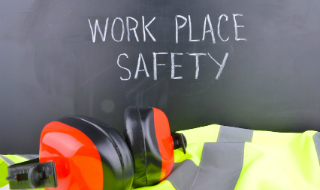In the ever-evolving landscape of modern workplaces, ensuring the safety and well-being of employees is not only a legal requirement but also a strategic imperative for organizational excellence. Crafting and navigating effective workplace safety policies is a multifaceted endeavor that demands a comprehensive approach to mitigate risks, foster a culture of well-being, and ultimately drive organizational success. Risk Assessment and Prevention: An effective safety plan begins with a meticulous risk assessment. Organizations must identify potential hazards and evaluate the level of risk associated with each. This involves not only physical hazards but also psychological and environmental factors that could compromise employee safety. A proactive stance toward risk prevention includes regular audits, training programs, and continuous monitoring to address emerging threats promptly.

Legal Compliance: Navigating workplace safety policies involves staying abreast of local, regional, and national regulations. Legal compliance is not just a box to be ticked; it is the foundation upon which a robust safety plan is built. Organizations must be well-versed in industry-specific regulations, regularly update policies to align with legislative changes, and ensure that employees are educated on their rights and responsibilities within the legal framework. Leadership plays a pivotal role in setting the tone, demonstrating a commitment to safety, and fostering an environment where employees feel empowered to report concerns without fear of reprisal. Regular communication, training sessions, and recognition for safety achievements contribute to the development of a safety-conscious workforce. Technology and Innovation: In the digital age, technology can be a valuable ally in enhancing workplace safety. From wearable devices that monitor physical well-being to advanced surveillance systems that detect potential hazards, leveraging technology can significantly augment safety measures. Additionally, innovative solutions such as virtual reality simulations can provide realistic training scenarios, ensuring that employees are well-prepared to handle emergency situations.
Emergency Response Planning: No safety plan is complete without a well-defined emergency response strategy. Organizations must establish clear protocols for various scenarios, conduct regular drills, and provide comprehensive training to employees. The goal is to create a sense of preparedness, enabling swift and effective action in the face of unforeseen events. Regularly updating and testing these protocols ensures that they remain relevant and functional. Continuous Improvement: Strategic safety planning is an ongoing process that demands a commitment to continuous improvement. Regularly reviewing and updating safety policies in response to evolving risks, Workplace Health Promotion technological advancements, and organizational changes is vital. Encouraging feedback from employees, conducting post-incident evaluations, and benchmarking against industry best practices contribute to a dynamic and effective safety framework. Navigating workplace policy for excellence in safety is a multifaceted undertaking that demands a holistic approach. From risk assessment and legal compliance to fostering a safety-conscious culture and leveraging technology, organizations must be proactive in their pursuit of workplace well-being.
